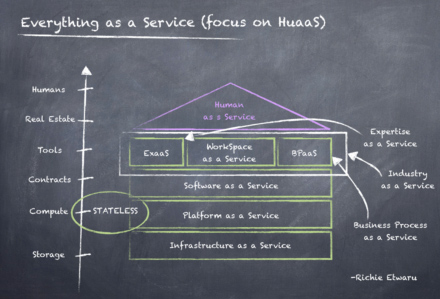Everything as a Service: How Clouding Will Disrupt the World
Business leaders interested in the future of IT should stop thinking of “the cloud” as a noun and start thinking about “clouding” as a verb. When we talk about cloud computing in general, we’re describing a set of efficiency principles applied to once-stateful compute resources that are now stateless and liquid.
And although the cloud concept has recently taken hold in IT, it’s not entirely new to other parts of life. One could argue, for example, that condominiums and hotels were early multitenant housing clouds. Similarly, Zipcar and Getaround are car clouds, offering consumers transportation as a service.
Anything can be clouded, if we put our minds to it. The clouding of compute resources gave rise to infrastructure as a service (IaaS), platform as a service (PaaS) and software as a service (SaaS). To make clouding meaningful, we can’t stop there.
Storage as a service is a key clouding opportunity. Dynamic and frictionless provisioning of compute capacity is moot if organizations still provision storage capacity from a stateful storage pool using outdated processes. There are other, unconventional opportunities for clouding to drive innovation, and advanced thinkers are gravitating to the notion of anything as a service.
A Clouded Life
In the new world of AaaS, workspace can be a service (WsaaS); expertise can be a service (ExaaS); and business process can be a service (BPaaS). We can roll all three into an overarching industry as a service (InaaS) capability. When everything is a stateless and liquid service, entire environments can be orchestrated for specific jobs, demands, roles or expertise, creating the opportunity to realistically leverage humans as a service. HuaaS would be game-changing.
Employees are currently stateful reservations of human capacity, assigned to tasks and controlled by a single manager. An employee may possess expertise outside his area of business, but is unable to contribute in other areas where that expertise may be needed. Today’s employment model takes into account only the primary talents of an individual and ignores the reality that humans are generally multidimensional and useful outside the scope of their stateful roles. This means valuable human capacity is wasted. If human capacity were aggregated as liquid, stateless supplies, it would allow companies to spin up capacity to meet the demand of projects.
We may not move clouding all the way up the enterprise resource stack right away, but companies that move furthest and fastest into clouding will engineer the agility and on-demand operating models they need to win.
To get started, simply replace cloud as a noun and use clouding as a verb to drive discussions around anything as a service, both inside and outside of IT. Consider this scenario: My connected car needs a new alternator, but instead of my car accessing my calendar and making an appointment with the service center (which would be cool), it broadcasts its replacement demand to a supply of local clouded mechanics possessing the necessary expertise (ExaaS). Those with the ability to accept my warranty (BPaaS) would bid on the demand, then work with a supply of mechanic shops to find an available bay (WsaaS) to work on my car.
When everything is a service, it’s easy to achieve efficiencies that we now only dream of. Imagining an EaaS future is thrilling. I predict that by 2015, global enterprises with large allocations of knowledge workers will have commercial-grade, human-capacity clouds leveraging ExaaS, WsaaS and BPaaS.









